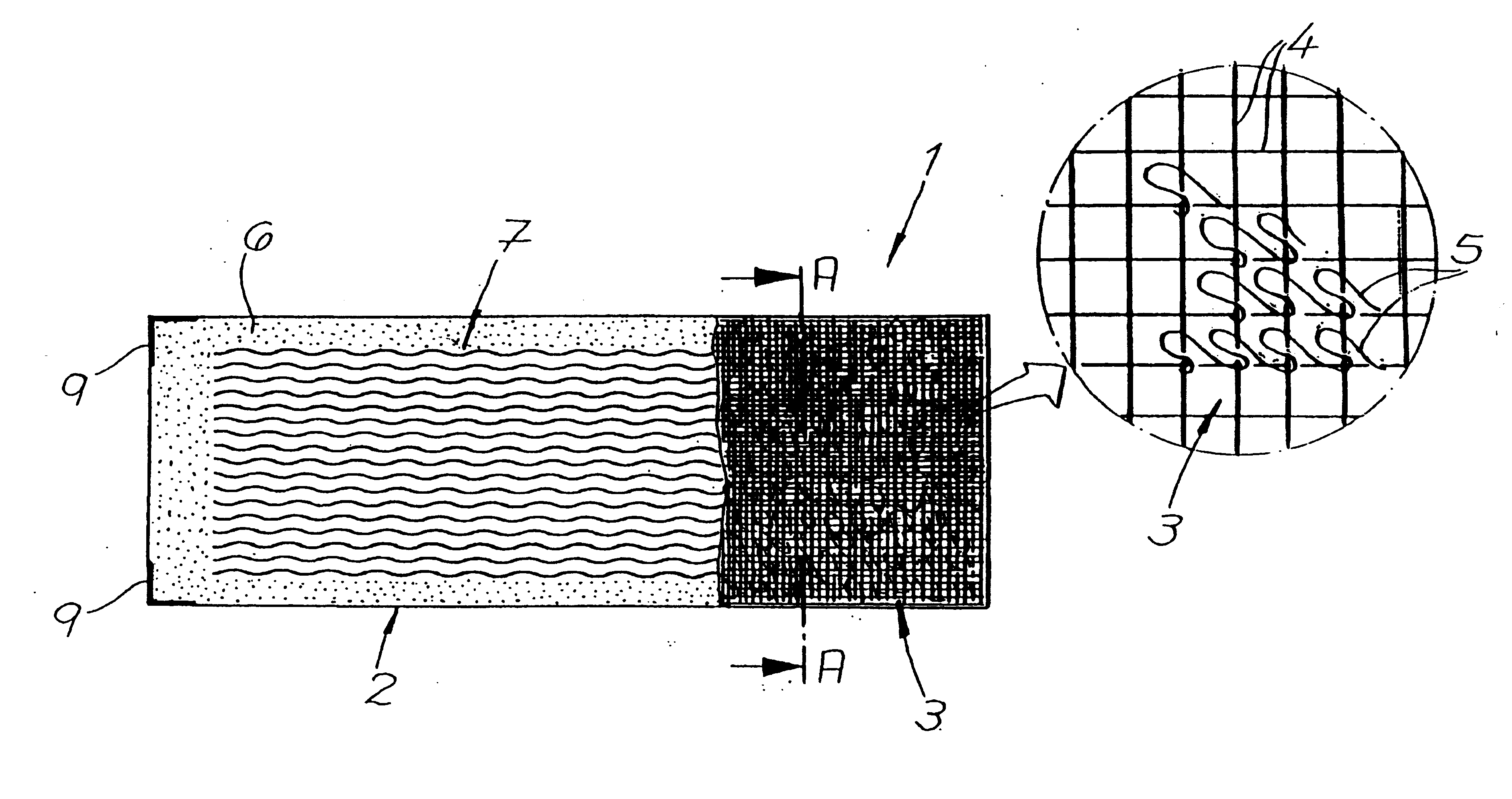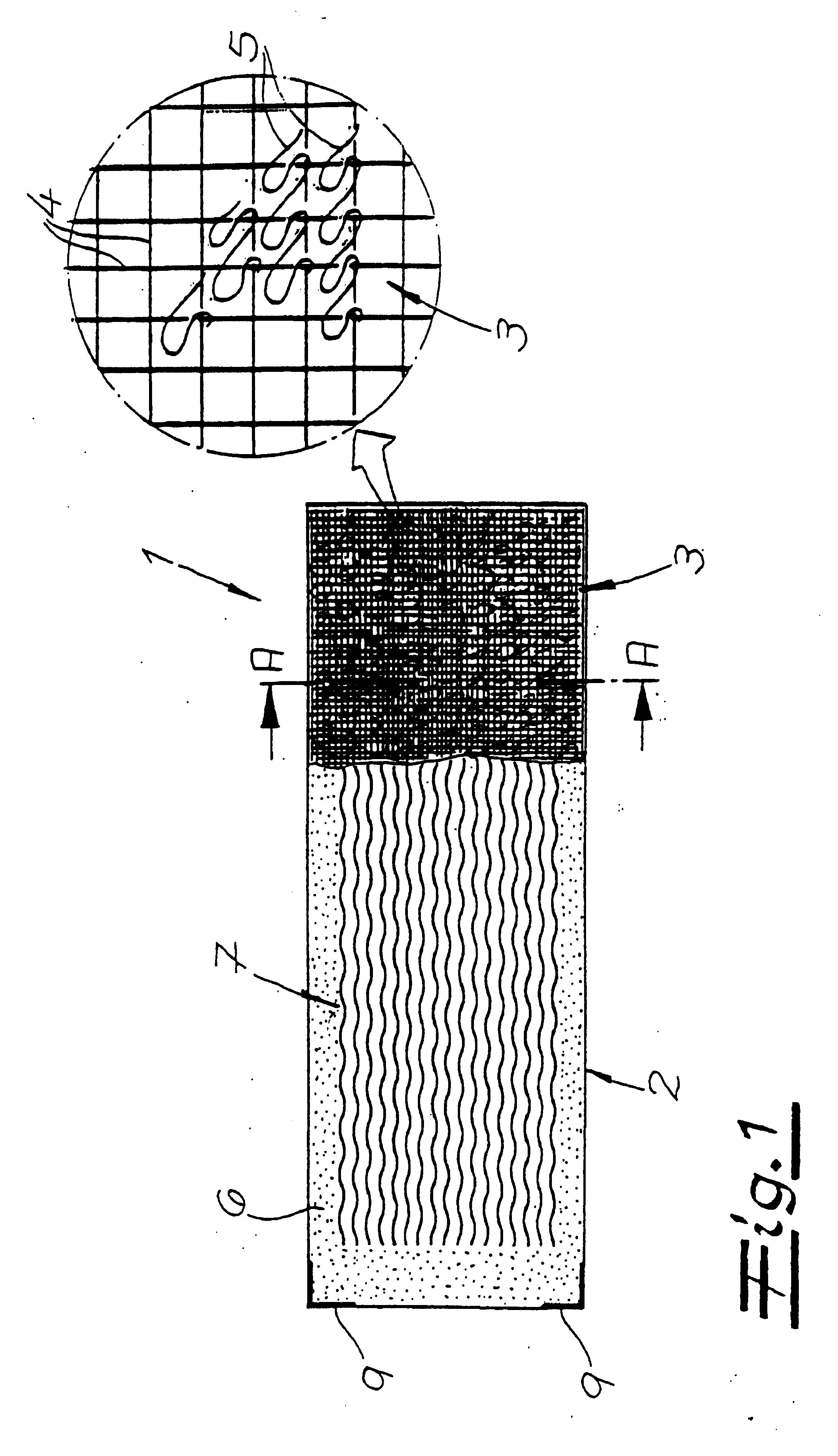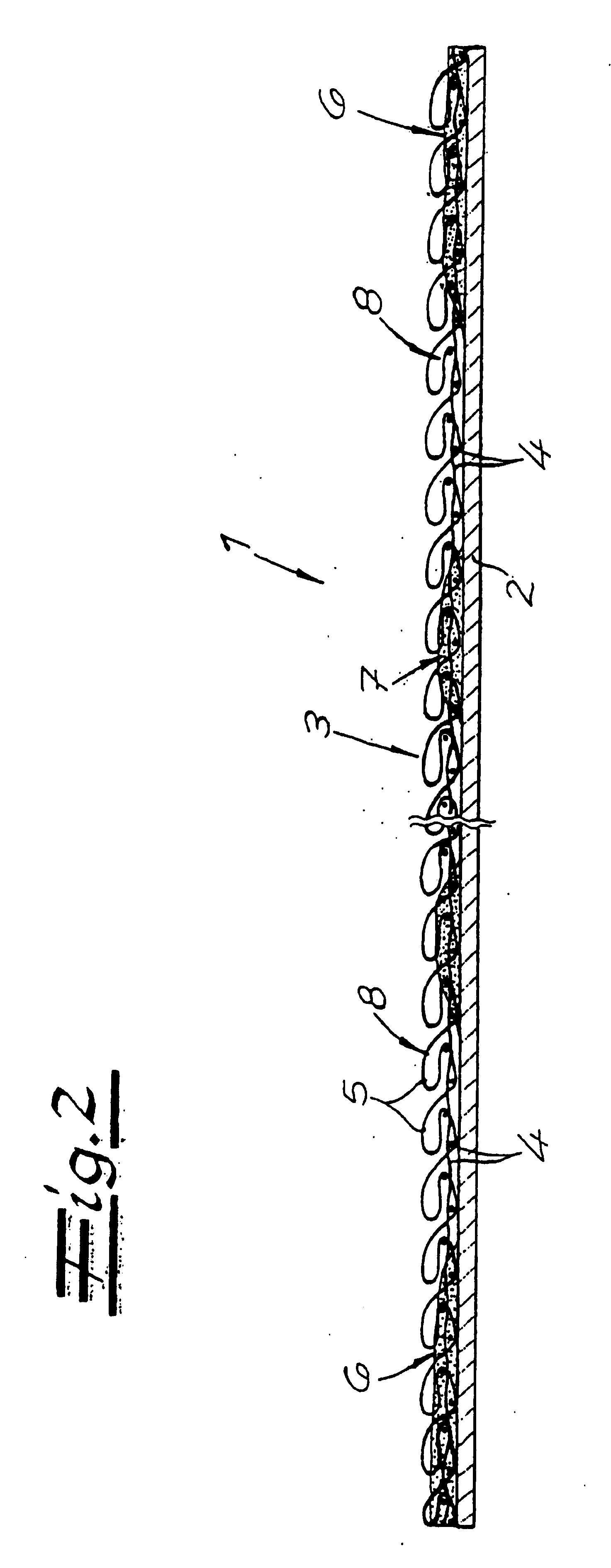Laminate material element for a hook and loop closure, particularly a diaper closure
a technology of a material element and a hook and loop closure, which is applied in the direction of knitting, ornamental textile articles, cellulosic plastic layered products, etc., can solve the problems of insufficient hook and loop effect, lost functionality, and unresolved to the full extent, so as to prevent the fraying of textile materials and achieve good hook and loop
- Summary
- Abstract
- Description
- Claims
- Application Information
AI Technical Summary
Benefits of technology
Problems solved by technology
Method used
Image
Examples
Embodiment Construction
[0024] Turning now in detail to the drawings, the laminate material element 1 shown schematically in FIGS. 1 and 2 can be used as a female part of a hook and loop closure. The laminate material is particularly intended for hook and loop closures on disposable products, e.g. baby diapers. It includes a carrier film 2 and a textile material 3 laminated onto the carrier film, which has a surface structure that is suitable for forming a connection with hook and loop hooks. The material shown in FIGS. 1 and 2 is warp-knitted fabric having a basic interlaid scrim of filament yarns 4, as well as loops 5 connected with the basic interlaid scrim by means of knitting technology. The loops 5 are disposed on the surface and are suitable for being connected with hook and loop hooks of a closure tape, not shown.
[0025] The carrier film 2 and the textile material 3 are not connected with one another over their entire area. A full-area connection along the edge of the laminate material element 1, h...
PUM
| Property | Measurement | Unit |
|---|---|---|
| Length | aaaaa | aaaaa |
| Length | aaaaa | aaaaa |
| Length | aaaaa | aaaaa |
Abstract
Description
Claims
Application Information
 Login to View More
Login to View More - R&D
- Intellectual Property
- Life Sciences
- Materials
- Tech Scout
- Unparalleled Data Quality
- Higher Quality Content
- 60% Fewer Hallucinations
Browse by: Latest US Patents, China's latest patents, Technical Efficacy Thesaurus, Application Domain, Technology Topic, Popular Technical Reports.
© 2025 PatSnap. All rights reserved.Legal|Privacy policy|Modern Slavery Act Transparency Statement|Sitemap|About US| Contact US: help@patsnap.com



